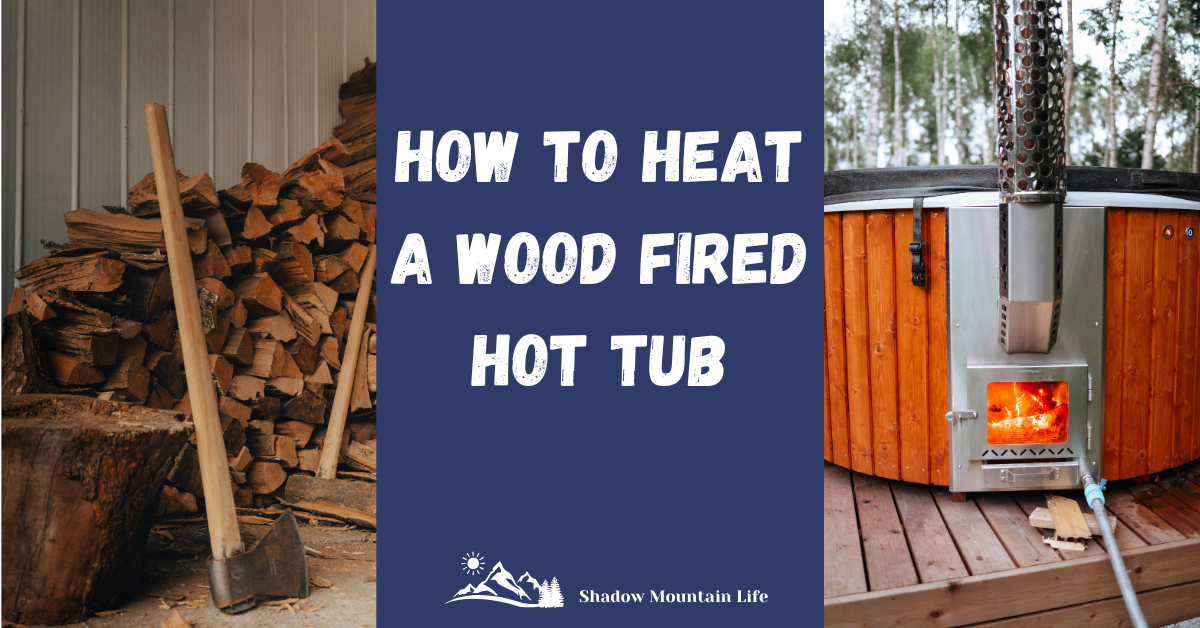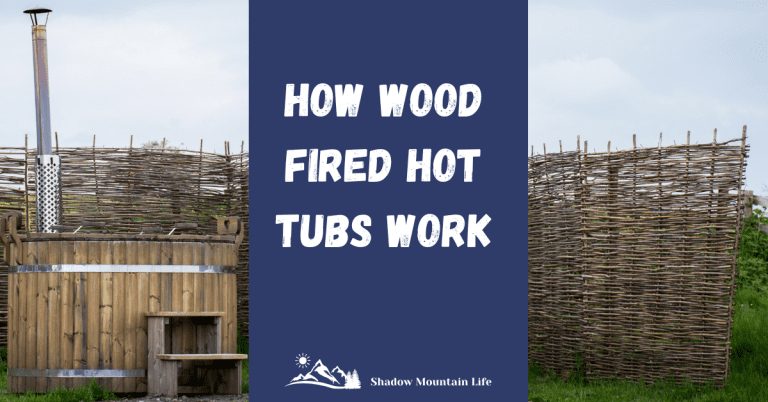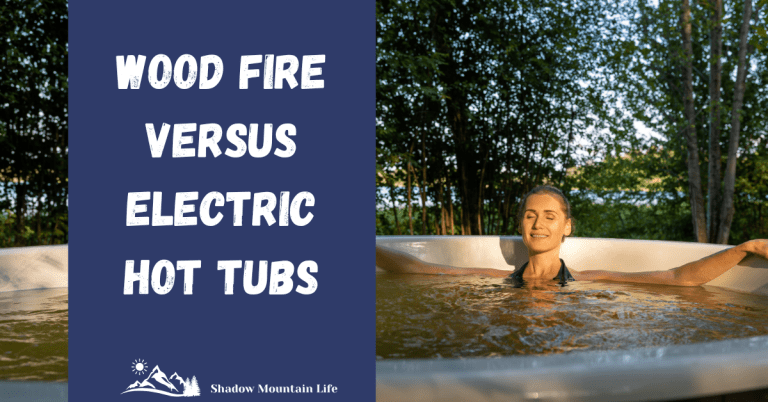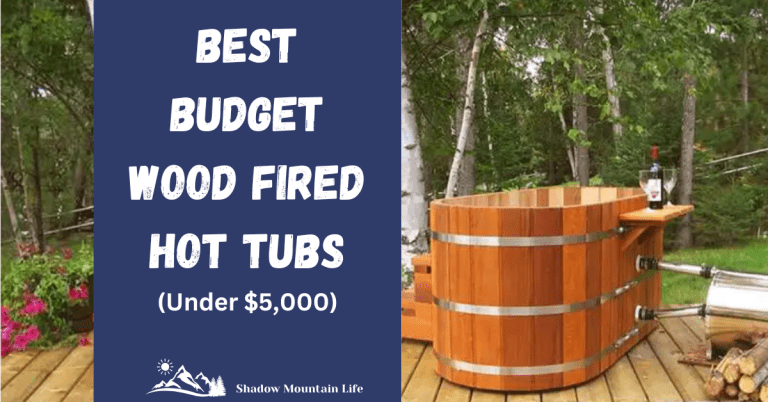How to Heat a Wood Fired Hot Tub: Temperature Managment for the Perfect Soak
Did you know that traditional wood fired hot tubs can reach optimal soaking temperatures in as little as 2-3 hours with proper heat management? As more people embrace the authentic, off-grid appeal of wood fired hot tubs, understanding how to heat a wood fired hot tub and manage the temperature becomes critical for the perfect soak. Today I’ll share some essential tips and tricks for maintaining that perfect temperature balance for your hot tub!
If you are brand new to wood fired hot tubs, check out our Wood Fired Hot Tub Guide for more information.
Medical Disclaimer: We are not doctors. The health information in the article is for informational and educational purposes only. Please consult your doctor or other healthcare professional when making medical decisions.
Affiliate Disclaimer: We may make a commission if you purchase something through our links. Thank you!

Understanding Your Wood Fired Hot Tub Heating System
Here’s the thing about wood fired hot tub heaters – they’re actually pretty straightforward once you understand the core components. The heart of the system is the firebox. Think of it like a woodstove wrapped in a water jacket. When you light the fire, the heat transfers through the metal walls into the surrounding water jacket, which then circulates the heated water back into your tub.
Now, there are two main types of heaters you’ll encounter: internal and external. Internal heaters sit right inside your tub – they’re super-efficient because there’s minimal heat loss, but they can take up precious soaking space! External heaters sit outside the tub and connect via pipes. They take a bit longer to heat the water up, but they give you extra legroom.
Hot water naturally rises, so you need proper circulation to distribute the heat evenly. Installing your intake pipes at the bottom of the tub and return pipes near the top can create a perfect circulation pattern.
Unlike electric hot tubs, wood fire hot tubs come with a chimney. The chimney isn’t just for smoke – it’s essential for creating the draft that keeps your fire burning efficiently, and if it’s too short it will create poor draft. So, it’s important to follow the manufacturer’s recommended height for the chimney system.
Installing a good thermometer on both the outflow and return pipes will tell you exactly what the water temperature is and how much heat you’re generating as well as how efficiently it’s transferring to your tub.
Remember, these systems are pretty robust, but they do require some care. Think of it like tending a campfire – it needs attention and adjustment. Once you understand how each component works together, maintaining the perfect soaking temperature becomes second nature.


Essential Temperature Ranges and Safety Guidelines
The sweet spot for soaking is between 100-104°F (37.8-40°C) water temperature. Anything above 104°F isn’t just uncomfortable, it can be downright dangerous.
Quick safety checklist I always share:
– Keep the water temperature at 104°F or below
– Check temperature before entering
– Limit soaking time to 20-30 minutes
– Keep extra water handy for cooling if needed
– Always ensure proper circulation before entering and stir the water to prevent hot and cold spots
Remember, maintaining safe temperatures isn’t just about comfort – it’s about protecting your guests (or yourself) while they enjoy the wood burning hot tub.

How to Heat a Wood Fired Hot Tub: Firewood Selection and Management
Firewood selection is more important than you may think as your choice of wood will impact how hot your tub gets as well as how efficient your stove burns.
Here’s the truth about hardwoods versus softwoods – while pine might be easier to light, hardwoods like oak and maple are your best friends for maintaining steady temperatures. Don’t just use whatever wood is cheapest. Those quick-burning softwoods will have you constantly feeding the fire instead of enjoying your soak!
Moisture content is absolutely something to be aware of. Keep a moisture meter nearby or in your woodshed. Your firewood should have less than 20% moisture content – anything higher and you’ll waste time and energy just boiling off water instead of heating your tub, and you will generate more smoke! Dry wood is much more efficient for the wood burning stove.
Logs about 16 inches long and 3-4 inches in diameter usually work well. They’re big enough to maintain heat but small enough to control the temperature precisely. Keep a small stack of different sized pieces near your tub. Start with smaller pieces for initial heating, then switch to larger logs for maintenance. And always have some quick-burning kindling handy for those times when you need to boost the temperature quickly. And of course, this all depends on the size of the stove that comes with your wood fire hot tub.
Store your wood in a covered shed with good airflow and stacked off the ground on pallets.

Heating Techniques for Different Seasons
Summer
Surprisingly, summer’s actually the trickiest season! When it’s 90°F outside, the last thing you want is to overheat your tub when the water gets too hot. Consider starting with a smaller fire in the wood stove in summer and maintain around 100°F – it feels perfect on those warm evenings.
Winter
Winter’s a whole different game. The key is maintaining a steady temperature rather than letting it drop and trying to heat it back up. Insulation becomes super important, make sure to wrap any external pipes in blankets or pool noodles as well as use an insulated cover for the water to retain heat. You may also want to purchase a small stock tank heater to keep your water from freezing.
Spring and Fall
Spring and fall are your “goldilocks” seasons – not too hot, not too cold and really perfect to use your wood fired hot tub. But watch out for those temperature swings! Check the forecast and adjust your firing schedule accordingly. If there’s a cold front coming through, it’s a good idea to build up a little extra heat beforehand.
Remember, the key is proactive management – it’s always easier to maintain the right temperature than to correct it once it’s off.
Temperature Maintenance Tips
The secret to steady temperature control isn’t just about adding wood – it’s about managing your fire’s airflow. Open the damper about 75% during initial heating, then dial it back to about 25% for maintenance. This simple adjustment can keep your hot tub temperature stable for hours.
Speaking of fire management, create a good coal bed first. Start with smaller pieces of wood, let them burn down to coals, then add larger logs. This gives you much more consistent heat than constantly adding fresh wood. Think of it like cooking with charcoal versus cooking over flames.
Heat retention is an important aspect too. Invest in a good, insulated cover and keep it on the tub when not in use. You can also add rigid insulation pieces that can float right on top of the water to insulate the tub and maintain the heat in really cold weather.
Troubleshooting Common Temperature Issues
Most problems have pretty straightforward solutions – once you know what to look for!
Uneven Heating
You know that annoying hot spot near the heater while the far side feels like the Arctic? Nine times out of ten, it’s circulation issues. The fix is usually simple: check for debris in your intake lines and filtration system and make sure your return jets are positioned correctly. Try angling them slightly upward and to the side which will create a gentle spiral flow that will distribute heat beautifully.
Slow Heating
If your tub’s taking more than 3-4 hours to heat, first check your wood moisture content. Wet wood is usually the culprit! Keep a moisture meter handy and don’t use anything above 20% moisture. Also, look at your chimney and make sure it is at it’s correct height for optimal draft.
Hot Tub’s Too Hot
Heat buildup can be scary if you don’t know what to do. Always keep a garden hose nearby for emergencies. When you notice temperatures creeping up, shut down the air intake completely, stop adding wood and then remove a few logs if needed. If it’s really urgent, add some cold water while draining a bit of hot water which will cool thing down.
Heat Loss Problems
Is your tub losing heat faster than normal? First, check your cover – even tiny gaps can let precious heat escape. Another sneaky culprit? Wind exposure. If you are in an area with a lot of wind, consider installing some wind barriers around the tub area-this will help with heat retention.
Remember, every tub has its own quirks, but once you understand these basic troubleshooting patterns, you’ll be able to solve most issues before they become real problems.
Mastering temperature management in your wood fired hot tub transforms the experience from challenging to rewarding. By following these proven techniques for fire management, wood selection, and seasonal adjustments, you’ll be able to maintain the perfect soaking temperature consistently. Remember, practice makes perfect – start with smaller fires and gradually refine your technique. Put this temperature management tips into action and enjoy the perfect soak every time!







